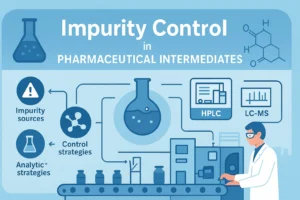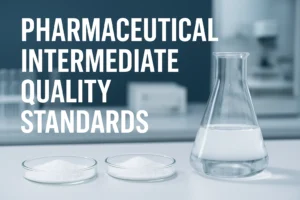Acalabrutinib vs Ibrutinib: Core Differences in Molecular Design
The Key Code for Targeting Selectivity
Acalabrutinib’s acrylamide structure is like a “smart key”, specifically locking the C481 site of BTK enzyme, with 3 times higher selectivity than Ibrutinib.
On the other hand, the pyrimidine ring structure of Ibrutinib is like a “universal wrench”, which acts on off-target sites such as EGFR at the same time; this is why the incidence of atrial fibrillation is much lower with Acalabrutinib (<2%) than with Ibrutinib (16%) in the clinical setting.
| | Acalabrutinib | Ibrutinib |
CAS | 1420477-60-6 | 936563-96-1 |
Molecular formula | C26H23N7O2 | C25H24N6O2 |
Molecular weight | 465.51 | 440.5 |
Watershed of Process Difficulties
In the synthesis workshop of an API plant, engineers had the biggest headache in the synthesis of intermediates for Acalabrutinib:
Chirality control: the ee value of the key intermediate (R)-3-(4-morpholinyl)propionamide should be > 99.5%.
Low temperature reaction: precise control of the condensation reaction time window at -15°C.
In contrast, although the synthesis of Ibrutinib is mature, the control of photosensitive impurities is still a pain point – a head pharmaceutical company once failed to detect excessive EP impurities in time, resulting in the scrapping of the entire batch of raw materials.
Acalabrutinib vs Ibrutinib: 5 Practical Indicators for Purchasing Decision Making
Hidden Details in the Cost Book
Raw material cost: the starting material price of Ibrutinib is 30% lower, but the process yield of Acalabrutinib is 15% higher.
Equipment investment: Acalabrutinib requires a specialized cryogenic reactor (costing over $2 million per unit).
Environmental costs: the cost of sulfoxide chloride treatment in Ibrutinib production accounts for 8% of the total cost of production
The Life and Death Line of Supply Stability
Last year, a European pharmaceutical company lost more than ten million dollars due to the intermediates of Ibrutinib being out of supply and the production line was shut down for 3 weeks.
At present, there are fewer than 10 companies in the world that can stably supply key intermediates for Acalabrutinib, while there are more than 50 suppliers of Ibrutinib; however 30% of them have the risk of unrecorded process changes.
Acalabrutinib vs Ibrutinib: The Deadly Pitfalls of Quality Control
The Death List of Heterogeneous Mass Spectrometry
Acalabrutinib: genotoxic impurity CP-724714 must be monitored (limit 0.03 ppm)
Ibrutinib: the proportion of isomers of the degradation product PCI-32765 needs to be <0.1%
An Indian supplier had failed to detect an azide impurity in Acalabrutinib, resulting in an unknown degradation peak in a customer’s formulation.
Gateway to Stability Data
In moist heat testing, Acalabrutinib APIs need to have a total impurity growth of <0.3% at 40°C/75%RH for 3 months, while Ibrutinib is usually allowed to be <0.5%.
But smart buyers will require suppliers to provide intermediates accelerated stability data – this is the real litmus test of process maturity.
Connoisseurs Choose Suppliers of the 3 Unspoken Rules
Response speed to process changes: quality suppliers can provide change impact assessment report within 24 hours
Impurity control stock: to see whether the self-provision of USP/EP standards is outside the 15 kinds of potential impurities
Transparency of supply chain: Ask for audit reports of the top three intermediate suppliers.
Why Do Global TOP20 Pharmaceutical Companies Choose us?
With 10 years of focus on BTK inhibitor field, we offer:
🔥 Acalabrutinib intermediates: key chiral intermediates with batch purity >99.95
🔥 Ibrutinib API: photosensitive impurity control up to <0.01%, exceeding the EP standard 3 times
✅ Dual filing of DMF/ASMF in China, USA and Europe
✅ Customized synthesis service
✅ Certainty in the supply chain
Click for exclusive process validation program
📱 WhatsApp: +86 133 6541 4469
📧 Email: damon.wang@sdsihuanpharm.com



